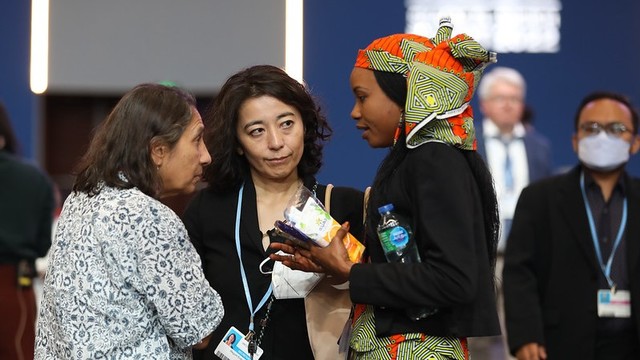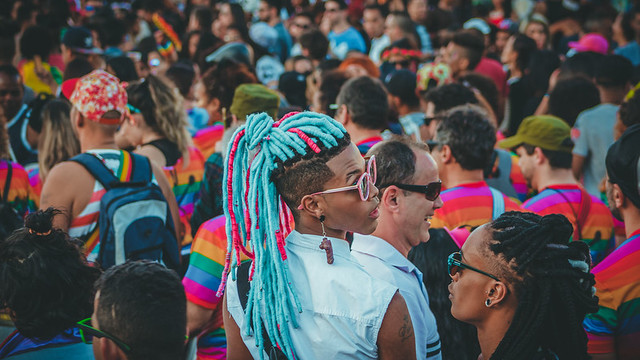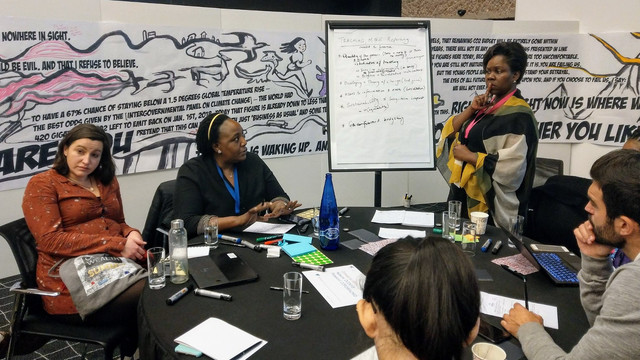Towards a fairer future for conservation
Conservation at a crossroads: Phil Franks explains why conservation must take fairness more seriously.


A market takes place in the village of Tiogo next to the Tiogo Forest in Burkina Faso. With much of the food and hand crafts on sale from the forest, the community is dependent on the conservation of the forest to maintain their livelihoods (Photo: CIF Action, Creative Commons, via Flickr)
Just under a year ago, at a meeting attended by 139 heads of state and government, the United Nations triumphantly adopted the 2030 Agenda for Sustainable Development and its associated Sustainable Development Goals (SDGs) – a positive and ambitious vision seeking to end poverty, protect the planet and ensure prosperity for all, where development is both sustainable and fairer.
A year later, the message from the IUCN World Conservation Congress (WCC) – the world's largest nature conservation event, hoping to shape the direction of conservation and sustainable development – is much more sobering:
The ecosystems that underpin our economies, well-being and survival are collapsing. Species are becoming extinct at unprecedented rates. Our climate is in crisis… The benefits of development are not shared equitably, the gap between rich and poor is widening, and economic growth is occurring at the expense of ecological integrity – World Conservation Congress
The congress' theme, 'Planet at a crossroads', underlines that it is not too late to take action for a future that is fairer and more sustainable. But time is running out.
Conservation has the particularly daunting task of having to recognise and reconcile a uniquely broad range of interests and rights ̶ these may range from the interests and rights of an individual living in an area of high conservation importance to national and global-level concerns about watershed protection, biodiversity and climate change.
There are some win-win situations but more often than not, conservation will involve trade-offs and hard decisions. Such decisions are being made everywhere, every day, but are they fair? Across all walks of life, concern about unfairness and inequality is growing, as clearly indicated in the SDGs.
What does 'fair' mean?
In the world of conservation policy, 'equity' is the word used in discussions of fairness; in the SDGs it is a mixture of 'inclusion', 'equity' and 'equality'; in rights-based approaches it is 'justice'.
In plain English these are all different interpretations of the same word: fairness.
What is considered 'fair' in any given situation will of course vary greatly according to different viewpoints, and may well change over time.
There can be no such thing as an outcome that will be forever fair. But stakeholders can certainly identify, plan and implement steps – be it a few big steps or several smaller ones – towards fairer (i.e. more equitable) conservation.
Equitable conservation in practice
What, then, is equitable conservation? Contributing to poverty reduction is certainly important, but equity is also about the costs of conservation, and how benefits are distributed relative to these costs.
Many conservation programmes have 'benefit-sharing arrangements' but these are often blind to costs such as human-wildlife conflict, for example in Bwindi Impenetrable National Park in Uganda where the resulting sense of injustice is as much a driver of illegal activity as poverty.
While it is essential to factor costs into the equity equation alongside benefits, there are two other crucial elements: the recognition of rights and interests, and fair procedures and processes.
Although different conservation and development actors will have different priorities according to their goals and capacities, an equitable approach to conservation needs to address all three dimensions of equity – recognition, procedure and distribution.
Recognition means acknowledging, and accepting the legitimacy of, a particular issue, interest or right. Respect means not interfering with the enjoyment of a right. This is a minimum standard of equitable conservation that applies to all conservation and development actors.
Although this standard has become much more widely accepted in recent years, an article in the Observer timed to coincide with the World Conservation Congress highlights 11 ongoing cases of violations of the rights of indigenous peoples linked to conservation.
Finding a fairer way forward
Equity is by no means a new concept in conservation organisations. For many years, conservation policymakers and practitioners have been addressing equity through work on rights and governance (particularly the recognition and procedural dimensions), and through work on costs and benefits and their distribution.
However the linkage between these streams of work has often been weak and there have been substantial gaps between strong rhetoric and policies, and implementation on the ground.
IIED is committed to shaping a fairer future. Both for reasons of ethics and legitimacy and to deliver more effective and sustainable conservation, our message to the congress is this: put equity at the centre of conservation and let us take stronger steps to practice what we preach.
Phil Franks (phil.franks@iied.org) is a senior researcher in IIED's Natural Resources research group. This blog was originally posted by Mongabay.




